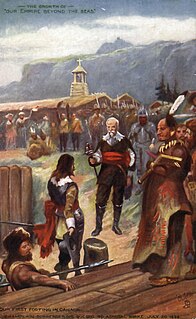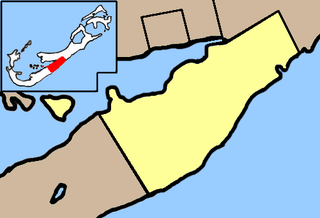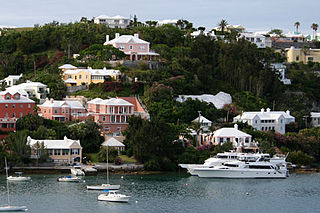Related Research Articles

Roger Williams was a Puritan minister, theologian, and author who founded Providence Plantations, which became the Colony of Rhode Island and later the U.S. state of Rhode Island. He was a staunch advocate for religious freedom, separation of church and state, and fair dealings with Native Americans.

Carolina was a province of England (1663–1707) and Great Britain (1707–1712) that existed in North America and the Caribbean from 1663 until partitioned into North and South on January 24, 1712. It is part of present-day Alabama, Georgia, Mississippi, North Carolina, South Carolina, Tennessee, and The Bahamas.

Sir David Kirke, also spelt David Ker, was an adventurer, privateer and colonial governor. He is best known for his successful capture of New France in 1629 during the Thirty Years' War and his subsequent governorship of lands in Newfoundland. A favourite of Charles I of England, Kirke's downfall came with that of the Crown during the English Civil War and it is believed he died in prison.

William Claiborne also, spelled Cleyburne was an English pioneer, surveyor, and an early settler in the colonies/provinces of Virginia and Maryland and around the Chesapeake Bay. Claiborne became a wealthy planter, a trader, and a major figure in the politics of the colonies. He was a central figure in the disputes between the colonists of Virginia and the later settling of Maryland, partly because of his earlier trading post on Kent Island in the mid-way of the Chesapeake Bay, which provoked the first naval military battles in North American waters. Claiborne repeatedly attempted and failed to regain Kent Island from the Maryland Calverts, sometimes by force of arms, after its inclusion in the lands that were granted by a 1632 Royal Charter to the Calvert family. Kent Island had become Maryland territory after the surrounding lands were granted to Sir George Calvert, first Baron and Lord Baltimore (1579-1632) by the reigning King of England, Charles I.

St. George's, located on the island and within the parish of the same names, settled in 1612, is the first permanent English settlement on the islands of Bermuda. It is often described as the third permanent British settlement in the Americas, after Jamestown, Virginia (1607) and Cupids, Newfoundland (1610), and the oldest continuously-inhabited British town in the New World, since the other two settlements were seasonal for a number of years.

Paget Parish is one of the nine parishes of Bermuda. It is named for William Paget, 4th Baron Paget de Beaudesert (1572–1629).

Diana Love Webster was a Bermudian-born American actress who was known for her marriage to actor Kirk Douglas from 1943 until their divorce in 1951. She was the mother of Michael and Joel Douglas.

Mary Prince was a British abolitionist and autobiographer, born in Bermuda to an enslaved family of African descent. Subsequent to her escape, when she was living in London, England, she and Thomas Pringle wrote her slave narrative The History of Mary Prince (1831), which was the first account of the life of a black woman to be published in the United Kingdom. This first-hand description of the brutalities of enslavement, released at a time when slavery was still legal in Bermuda and British Caribbean colonies, had a galvanising effect on the anti-slavery movement. It was reprinted twice in its first year.

The Providence Company or Providence Island Company was an English chartered company founded in 1629 by a group of Puritans including Robert Rich, 2nd Earl of Warwick in order to establish the Providence Island colony on Providence Island and Mosquito Coast of what became Nicaragua.

The architecture of Bermuda has developed over the past four centuries. The archipelago's isolation, environment, climate, and scarce resources have been key driving points, though inspiration from Europe, the Caribbean and the Americas is evident. Distinctive elements appeared with initial settlement in the early 17th century, and by the second half of that century features that remain common today began to appear.
John Sanford was an early settler of Boston, Massachusetts, an original settler of Portsmouth, Rhode Island, and a governor of the combined towns of Portsmouth and Newport in the Rhode Island colony, dying in office after serving for less than a full term. He had some military experience in England, and also was an employee of Massachusetts magistrate John Winthrop's household prior to sailing to New England in 1631 with Winthrop's wife and oldest son. He lived in Boston for six years and was the cannoneer there.
Matthew Cradock was a London merchant, politician, and the first governor of the Massachusetts Bay Company. Founded in 1628, it was an organization of Puritan businessmen that organized and established the Massachusetts Bay Colony. Although he never visited the colony, Cradock owned property and businesses there, and he acted on its behalf in London. His business and trading empire encompassed at least 18 ships, and extended from the West Indies and North America to Europe and the Near East. He was a dominant figure in the tobacco trade.

The Battle of St. Kitts or St. Cristopher was a successful Spanish expedition that seized the islands of Saint Kitts and Nevis from the English and French during the Anglo-Spanish War (1625–30).

George James Bruere was the British Governor of Bermuda from 1764 until his death. Of all Bermuda's governors since 1612, his term of office was the longest. He had a difficult time during the American Revolutionary War and is thought to have died of stress caused by the interplay of Bermudians and Continental rebels.

The English overseas possessions, also known as the English colonial empire, comprised a variety of overseas territories that were colonised, conquered, or otherwise acquired by the former Kingdom of England during the centuries before the Acts of Union of 1707 between the Kingdom of England and the Kingdom of Scotland created the Kingdom of Great Britain. The many English possessions then became the foundation of the British Empire and its fast-growing naval and mercantile power, which until then had yet to overtake those of the Dutch Republic, the Kingdom of Portugal, and the Crown of Castile.

The Providence Island colony was established in 1630 by English Puritans on what is now the Colombian Department of San Andrés and Providencia, about 200 kilometres (120 mi) east of the coast of Nicaragua. Although intended to be a model Puritan colony, it also functioned as a base for privateers operating against Spanish ships and settlements in the region. In 1641, the Spanish and Portuguese, after two previous attempts, finally penetrated the harbour's defenses and defeated the English in battle. The Spanish removed all the people but kept the structures. This garrison was maintained on the island, now called Santa Catalina again, until 1666.
Sussex Camock or Sussex Cammock (1600–1659) was an English privateer who was involved in establishing the Providence Island colony, a Puritan colony on what is now Isla de Providencia in the western Caribbean. Sussex Camock was the brother of Captain Thomas Cammock.
Philip Bell was Governor of Bermuda from 1626 to 1629, of the Providence Island colony from 1629 to 1636, and of Barbados from 1640 to 1650 during the English Civil War. During his terms of office in Providence and Barbados, the colonies moved from using indentured English workers to slaves imported from West Africa. The Providence Island colony, despite its puritan ideals, became a haven for privateers attacking ships in the Spanish Main.
Henry Woodhouse (1573–1637) was Governor of Bermuda between 1623 and 1627.

The Russo-Persian War of 1651–1653 was an armed conflict in the North Caucasus fought between the Safavid Empire and the Tsardom of Russia, associated with the Safavid plans to strengthen its position in the region and to exclude Russia. The main issue involved the expansion of a Russian garrison on the Koy Su River, as well as the construction of several new fortresses, in particular the one built on the Iranian side of the Terek River. The Safavid government then sent troops, and destroyed the fortress while expelling its Russian garrison. In 1653 Alexis of Russia and the Russian government, which thought about sending the Russian Zaporozhian Army, but did not want to disperse its forces, sent an embassy to Persia for a peaceful settlement of the conflict. Shah Abbas II agreed, stating that the conflict was initiated without his consent.
References
Citations
- 1 2 Bernhard 1999, p. 34.
- ↑ Bernhard 1999, p. 35.
- ↑ Bernhard 1999, p. 15.
- 1 2 Jarvis 2010, p. 486.
- ↑ Jarvis 2010, p. 43-44.
- ↑ Rhoden 2007, p. 120.
- ↑ Bernhard 1999, p. 14.
- 1 2 Bernhard 1999, p. 40.
- ↑ Lake & Questier 2000, p. 62.
- ↑ Brenner 2003, p. 279.
- ↑ Bernhard 1999, p. 41.
- ↑ Heywood & Thornton 2007, p. 257.
- ↑ Bernhard 1999, p. 71.
- ↑ Christ's Devonshire Parish Church.
Sources
- Bernhard, Virginia (1999-10-18). Slaves and Slaveholders in Bermuda, 1616-1782 . University of Missouri Press. p. 15. ISBN 978-0-8262-1227-6 . Retrieved 2012-09-13.
- Brenner, Robert (2003). Merchants and Revolution: Commercial Change, Political Conflict, and London's Overseas Traders, 1550-1653. Verso. p. 279. ISBN 978-1-85984-333-8 . Retrieved 2012-09-13.
- "Christ's Devonshire Parish Church". Roots web. Retrieved 2012-09-13.
- Heywood, Linda M.; Thornton, John K. (2007-09-03). Central Africans, Atlantic Creoles, and the Foundation of the Americas, 1585-1660. Cambridge University Press. ISBN 978-0-521-77922-7 . Retrieved 2012-09-13.
- Jarvis, Michael J. (2010-04-01). In the Eye of All Trade: Bermuda, Bermudians, and the Maritime Atlantic World, 1680-1783. UNC Press Books. p. 486. ISBN 978-0-8078-3321-6 . Retrieved 2012-09-13.
- Lake, Peter; Questier, Michael C. (2000). Conformity and Orthodoxy in the English Church, C. 1560-1660. Boydell & Brewer. ISBN 978-0-85115-797-9 . Retrieved 2012-09-13.
- Rhoden, Nancy L. (2007-08-09). English Atlantics Revisited: Essays Honouring Ian K. Steele. McGill-Queen's Press - MQUP. ISBN 978-0-7735-3219-9 . Retrieved 2012-09-13.